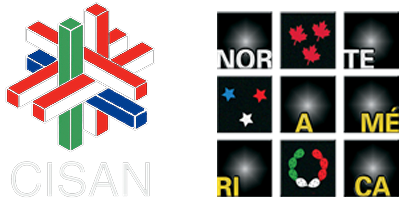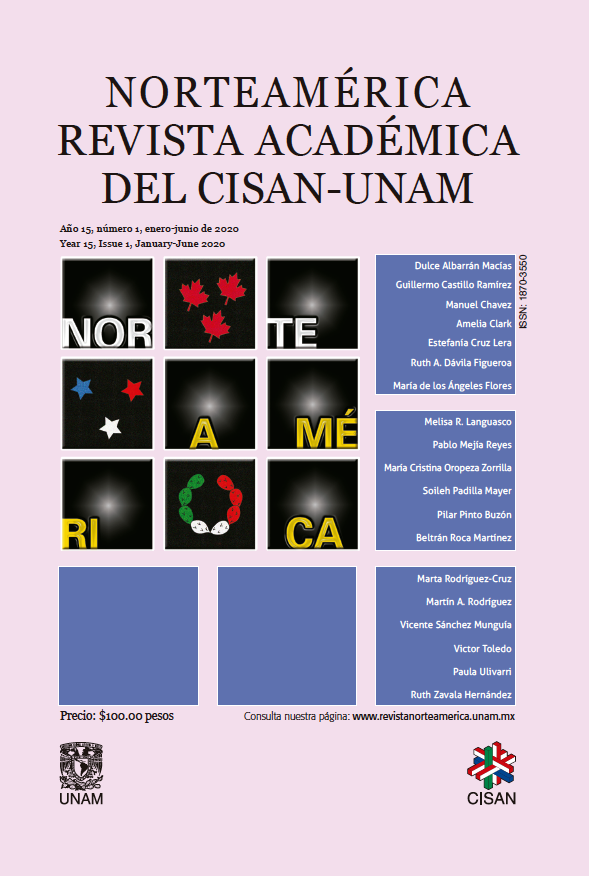Abstract
In 2019, a record number of women were members of the U.S. Congress. In addition to their in-creased participation, these congresswomen are more ethnically, racially, culturally, and class diverse. Two highly contrasting profiles show up in this political universe: the Establishment women led by Nancy Pelosi and the rebellious “Squad,” headed by Alexandria Ocasio-Cortez. This article analyzes social networks, the press, and their legislative performance to contrast both styles of political representation. The author’s main finding is that the Squad and Establis-hment representatives do not differ in terms of presenting bills, voting, and funding sources; the main differences are found in their public discourse, their ideological platform, and their leader-ship styles.
References
BARNELLO, M. A., & BRATTON, K. A.
(2007). Bridging the gender gap in bill sponsorship. Legislative Studies Quarterly, 32(3), 449–474. https://doi.org/10.3162/036298007781699645
CARROLL DOHERTY, KILEY, J., & OHEA, O.
(2018). Wide Gender Gap, Growing Educational Divide in Voters’ Party Identification.
CARROLL, S. J., & FOX, R. L.
(2018). Gender and Electoral Politics in the Twenty-First Century. In S. J. Carroll & R. L. Fox (Eds.), Gender and Elections: Shaping the Future of American Politics (pp. 1–14). Cambridge University Press.
CENTER FOR AMERICAN WOMEN AND POLITICS.
(2018). Gender Watch 2018. https://www.genderwatch2018.org
CONGRESSIONAL RESEARCH SERVICE.
(2019). Women in Congress: Statistics and Brief Overview.
CONNELL, R.
(2006). Glass ceilings or gendered institutions? Mapping the gender regimes of public sector worksites. Public Administration Review, 66(6), 837–849. https://doi.org/10.1111/j.1540-6210.2006.00652.x
DAY, C. L., & HADLEY, C. D.
(2001). Feminist diversity: The policy preferences of women’s PAC contributors. Political Research Quarterly, 54(3), 673–686. https://doi.org/10.1177/106591290105400310
DITTMAR, K.
(2018). Disrupting Masculine Dominance? Women as Presidential and Vicepresidential Contenders. In S. J. Carroll & R. L. Fox (Eds.), Gender and Elections: Shaping the Future of American Politics (pp. 48–77). Cambridge University Press.
DOWD, M.
(2019). It’s Nancy Pelosi Parade. The New York Times. Retrieved from All these people have their public whatever and their Twitter world
FOX, R. L.
(2018). Congressional Elections: Women’s Candidancies and the Road to Gender Parity. In S. J. Carroll & R. L. Fox (Eds.), Gender and Elections: Shaping the Future of American Politics (pp. 198–219). Cambridge University Press.
GEORGIA DUERST-LAHTI.
(2002). Knowing Congress as a Gendered Institution: Manliness and the Implications of Wome in Congress. In C. S. Rosenthal (Ed.), Women transforming Congress (pp. 20–49). University of Oklahoma Press.
GRIFFIN, J. D., NEWMAN, B., & WOLBRECHT, C.
(2012). A gender gap in policy representation in the U.S. congress? Legislative Studies Quarterly, 37(1), 35–66. https://doi.org/10.1111/j.1939-9162.2011.00034.x
HAWKESWORTH, M.
(2003). Congressional Enactments of Race-Gender: Toward a Theory of Raced-Gendered Institutions. American Political Science Review, 97(4), 529–550. https://doi.org/10.1017/S0003055403000868
HILL, L.
(2006). Women’s interests in formal politics: the gender voting gap in three industrialized settings. In L. Chappell & L. Hill (Eds.), The Politics of Women’s Interests: New Comparative Perspectives (pp. 66–92). Abingdon: Routledge.
HILL, L., & CHAPPELL, L.
(2006). Introduction: the politics of women’s interests. In L. Chappell & L. Hill (Eds.), The Politics of Women’s Interests: New Comparative Perspectives (pp. 1–4). Abingdon: Routledge.
HURTADO, A.
(1996). The color of privilege : three blasphemies on race and feminism. University of Michigan Press.
KELBER, M.
(1994). Women and Government: New Ways to Political Oower. Wesport: A women USA Fund Study/ Praeger Publishers.
KENNEY, S. J.
(1996). New research on gendered political institutions. Political Research Quarterly, 49(2), 445–466. https://doi.org/10.1177/106591299604900211
LAWLESS, J. L.
(2004). Politics of Presence: Women in the House and Symbolic Representation. Political Reseach Quarterly, 57(1), 81–99.
MANSBRIDGE, J.
(1999). Should Blacks Represent Blacks and Women Represent Women ? A Contingent " Yes ". The Journal of Politics, 61(3), 628–657.
MCBRIDE, D. E., & PARRY, J. A.
(2011). Wome’s Rights in the USA (4th ed.). New York: Routledge.
PALLEY, M. L.
(2007). Women’s Policy Leadership in the United States. Political Science & Politics, 34(2), 247–250.
PALMER, B., & SIMON, D.
(2006). Breaking the Political Glass Ceiling: Women and Congressional Election, Routledge/ Taylor & Francis Group.
PARKER, B. Y. K., HOROWITZ, J., IGIELNIK, R., OLIPHANT, B., & BROWN, A.
(2018). Women and Leadership 2018.
ROTH, B.
(2006). Gender inequality and feminist activism in institutions: challenges of marginalization and feminist “fading.” In L. Chappell & L. Hill (Eds.), The Politics of Women’s Interests: New Comparative Perspectives (pp. 157–174). Abingdon: Routledge.
STEIN, J.
(2018). What Ocasio-Cortez wants for America after beating Joe Crowley. The Washington Post.
SWERS, M. L.
(1998). Are Women More Likely to Vote for Women’s Issue Bills than Their Male Colleagues? Legislative Studies Quarterly, 23(3), 435. https://doi.org/10.2307/440362
(2005). Connecting descriptive and substantive representation: An analysis of sex differences in cosponsorship activity. Legislative Studies Quarterly, 30(3), 407–433.
TETRAULT, L.
(2014). The myth of Seneca Falls : memory and the women’s suffrage movement, 1848-1898. UNC Press Books.
THOMSEN, D. M.
(2015). Why So Few (Republican) Women? Explaining the Partisan Imbalance of Women in the U.S. Congress. Legislative Studies Quarterly, 40(2), 295–323.
UNION, A. C. L.
(2019). Legislative Scorecard 2018. Retrieved from https://www.aclu.org/other/legislative-scorecard-2018
US CENSUS BUREAU.
(2018). Population Estimates 2018. https://www.census.gov/quickfacts/fact/table/US
(2019). Behind the 2018 US Midterm Election Voter Turnout. https://www.census.gov/library/stories/2019/04/behind-2018-united-states-midterm-election- turnout.html
VICKERS, J.
(2006). The problem with interests: making political claims for women. In L. Hill & L. Chappell (Eds.), The Politics of Women’s Interests: New Comparative Perspectives (pp. 5–38). Abingdon: Routledge.
WELLMAN, J.
(2004). The road to Seneca Falls : Elizabeth Cady Stanton and the First Woman’s Rights Convention. University of Illinois Press.

This work is licensed under a Creative Commons Attribution-NonCommercial-NoDerivatives 4.0 International License.
Copyright (c) 2020 Estefanía Cruz Lera



